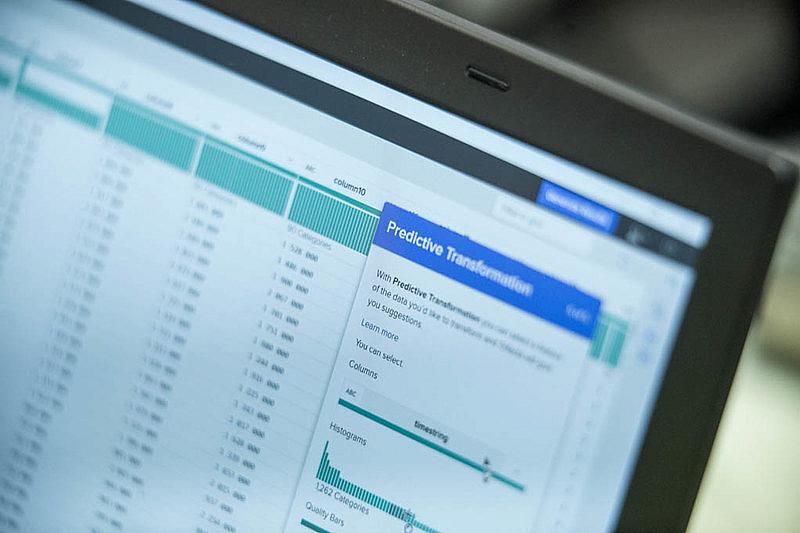Data whiz Liz Lucas shares tips for telling stories about health disparities with data
Journalists have, at their disposal, massive amounts of data to illustrate stories about health disparities in America. The challenge lies in finding the right data and framing it in a way that’s both accurate and sensitive to the populations you’re reporting on.
Veteran data journalist Liz Lucas shared insights and guidance with reporters participating in the 2021 Data Fellowship, held via Zoom this year, on how to effectively tell stories of people whose health status may be affected by factors outside their control.
“Health care of course is not a level playing field,” said Lucas, who previously worked as data editor for Kaiser Health News and now teaches data journalism at the University of Missouri School of Journalism. “Not when it comes to access and not when it comes to quality and not when it comes to outcomes.”
Lucas started with a definition of disparity: “a noticeable and usually significant difference or dissimilarity.”
Health disparities came into stark focus during the pandemic, as people of color were more likely to be hospitalized or die from COVID-19. Lucas shared a quote from former Centers for Disease Control and Prevention Director Dr. Thomas Frieden: “Most epidemics are guided missiles attacking those who are poor, disenfranchised and have underlying health problems.”
Lucas urged reporters to focus on what happens to these individuals before they end up in the hospital or doctor’s office: the built environment of their neighborhoods, whether they have adequate transportation, their exposure to pollution.
Another term that applies to this type of reporting is “intersectionality,” defined as “the complex, cumulative way in which the effects of multiple forms of discrimination (such as racism, sexism, and classism) combine, overlap, or intersect especially in the experiences of marginalized individuals or groups.”
In other words, it’s too simplistic to lump people affected by disparities into one group, because the human experience is so individualized and unique.
If you’re breaking down data by race, Lucas said, “What if you add gender in there? What if you add age groups? What if you were able to get income data and throw that in there?”
“The more you can think in terms of how these … sorts of discriminations compound each other, the better your data analysis will be,” she added.
She highlighted some of her favorite data journalism projects focusing on disparities:
- “Code Red: Baltimore's Climate Divide,” by the Howard Center for Investigative Journalism, Capital News Service and NPR
- “Millions Stuck At Home With No Plumbing, Kitchen Or Space To Stay Safe” and “The Other COVID Risks: How Race, Income, ZIP Code Influence Who Lives Or Dies,” by KHN
- “Black Workers Are More Likely to Be Unemployed but Less Likely to Get Unemployment Benefits,” by ProPublica
Lucas said she liked the last one so much that she hired the reporter, Hannah Recht, to work for her when she was at KHN.
Lucas noted that disparity stories can sometimes be hard sells to editors, as they don’t often have the clear “bad guy” of traditional investigative reporting. But she says journalists can persuade their editors to embrace such projects by pointing to similar ones that have won awards — “to get some competitive juice going” — and to clearly illustrate the harm being done to a person or community by a systemic failure.
Lucas emphasized three fundamental rules she stresses to every data reporter:
1) Know your data by reading the documentation (including footnotes), checking the columns and talking to experts.
2) Keep a detailed log of your analysis including questions, pivot tables, queries, thoughts and notes on the data.
3) Have someone check your work, such as another data person or a trusted editor or reporter.
Some other cautions to keep in mind:
“One of the gut checks I have is I try to imagine how I would feel about being described by those categories: the available categories and data,” Lucas said. “How would I feel if I were introduced as a white woman who is in her late 30s? And that's all that's all there is to know about me.”
Lucas said some statistical groupings (like sexual orientation and gender identity) aren’t being counted by the people and organizations in power, and that some communities (such as indigenous ones) are often too small to show up in the data.
To get around these barriers, she suggests talking to diverse groups of people for story ideas and writing honestly about your sources’ lives, in all their intricacies.
“Let your characters be more complex than your data,” she said. “Data necessarily represents people in wide, sweeping terms. It's really important that we try to remember not to choose anecdotal stories or to choose ledes that shoehorn people into that narrow version of things.
“Through our reporting, we can uplift the richness and the complexity of people in ways that data can sometimes diminish.”
**
Liz Lucas’ suggested data sources for measuring health disparities:
— The Centers for Disease Control and Prevention Social Vulnerability Index
— The U.S. Census Bureau Community Resilience Estimates
— Census data (data.census.gov or censusreport.org)


